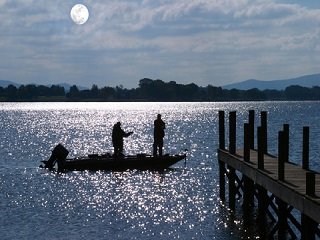 As we’ve touched upon in Parts One and Two of our series on docks, there’s quite a bit involved with targeting these fish magnets. Today, we’ll continue by looking at another integral piece of the puzzle: your approach.
As we’ve touched upon in Parts One and Two of our series on docks, there’s quite a bit involved with targeting these fish magnets. Today, we’ll continue by looking at another integral piece of the puzzle: your approach.
One key to approaching docks is always work into the wind, rather than with it. This allows you to control your approach precisely, as any small adjustments can be made easily with your trolling motor. It will also help keep you from floating by a dock too quickly, or even right into it.
It’s crucial to stay at least ten feet from a dock at all times. You may need to move even further away if the water is clear and the fish are more finicky than usual. Also, noise and vibration from your trolling motor can easily spook the fish, so keep your setting on low and use it only when you need to make quick adjustments. A bow mount electric trolling motor is your best bet here, due to its maneuverability and ease of use. Aside from making too much noise, take great care to not cast a shadow across the area you intend to fish.
You’ll want to fish the end of the dock first, as it will be closest to you and the most active fish will stage on the outside areas, so picking them off first will be a smart choice. Plus, by targeting the outer portions of the dock first, you’ll be less likely to spook other fish that are staging closer to shore when fighting a fish. Once you’ve worked the edge of the dock, work your way down each side until you reach the further parts. If there’s a boat tied off, fish the prone side first before working the area between the boat and the dock.
Take care when approaching docks by working the wind, keeping your silhouette low, and working from the outside in. Also, keep in mind that bumping into the dock itself or getting too close will, of course, decrease your odds of catching fish, and will also make dock owners pretty upset. Don’t be afraid to move closer to docks, but do so carefully and respectfully when you’re on the water this summer.








